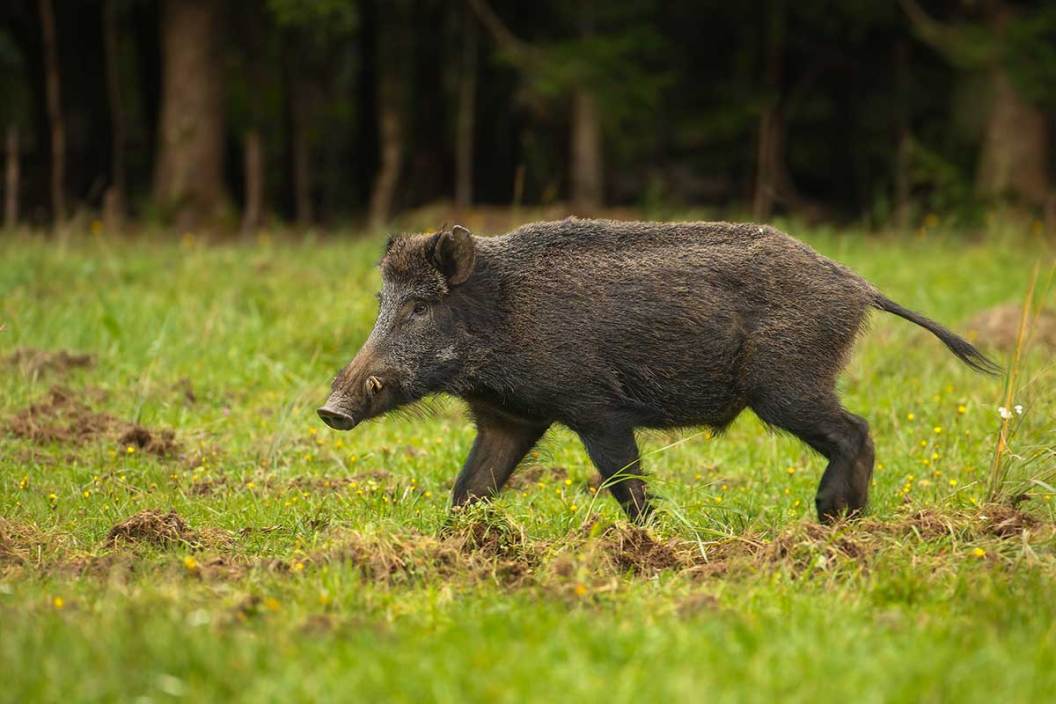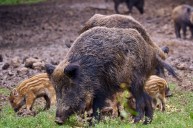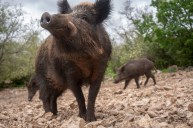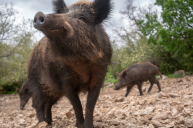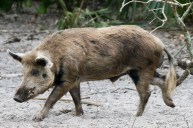They're becoming more and more common in certain corners of the country, but are feral hogs dangerous to humans?
Feral hogs are one of the most destructive, invasive, and dangerous species we know of in North America, and there's no denying it.
As an invasive species, they can overrun an area with their sheer numbers and destroy crops, sometimes without ever being seen in the light of day.
They can get big, run in large groups, and yes, they can have a very nasty temperament. Feral hogs are the type of wild animals that get a bad name, even in hunting circles, and can cause serious, irreparable damage to the ecosystem they reside in.
They are a never-ending source of hunting targets, which has turned into a popular activity for locals and out of state hunters. But as an invasive species, they are swarming some parts of our agricultural country, ranching land, and wildlife habitat. It's no wonder that humans are starting to feel the pressure.
Sure, they're plenty dangerous. Here's why we need to eradicate feral hogs and a few methods of doing so.
Yes, Wild Hogs Can Be Aggressive
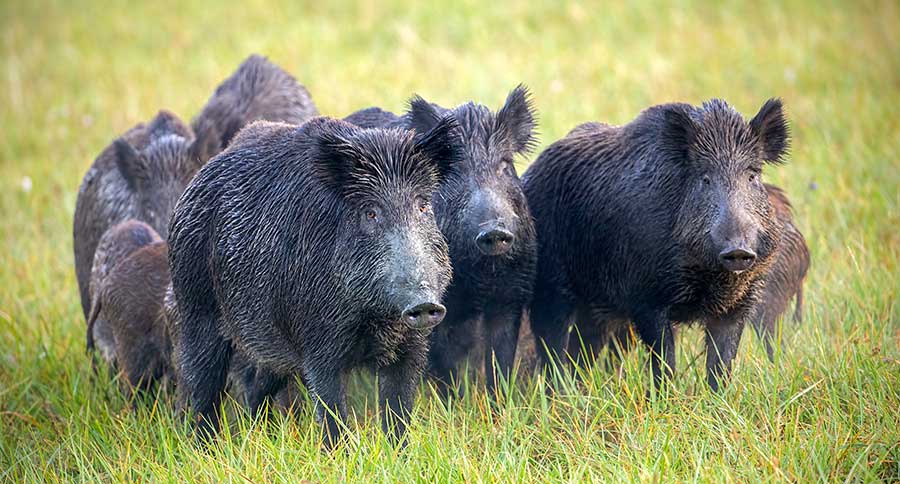
There are serious risks posed by feral hogs to people, and while rare, they include attacks on hikers and hunters or collisions with motor vehicles and even aircraft. One Texas woman was confirmed to be attacked and killed by a wild hog in November, 2019. Plenty of other instances, here in the U.S. and around the world, have been recorded. They're strong, fast, and can hurt you, or worse.
Even if you aren't seriously inured, they can be an aggressive nuisance as well, essentially threatening violence without actually committing any. Feral swine have known to be aggressive towards farmers, golfers, and even folks out trying to have a simple picnic. Small pets are at risk as well.
Aggression can be increased due to the simple lack of fear of humans over the course of time. Feral pigs can exhibit aggressive territorial behaviors as well.
A big, mature boar may weigh up to 300 pounds or more, can charge with what some would call stunning speed, and can quickly attack without warning. These boars have four extremely sharp tusks up to five inches long that can severely injure a person or a pet. Folks living in regions where feral hogs have staked a territorial claim have to be extra cautious when walking their pets, or even letting them out in a yard.
It's Not All About the Tusks
Keep in mind, feral hogs don't just pose a physical attack threat, but can be dangerous in another important way.
According to the USDA, "Harmful organisms and pathogens, carried by feral swine, which can infect humans include diseases such as leptospirosis, toxoplasmosis, brucellosis, tularemia, trichinellosis, swine influenza, salmonella, hepatitis and pathogenic E. coli."
Feral swine can carry at least 30 viral and bacterial diseases and some 40 parasites that can be transmitted to humans, pets, livestock, and other wildlife making them not just dangerous, but honestly rather disgusting.
Now, most of these ailments would require the consumption of wild hog, or at least some very close contact, which can generally be avoided.
But let's be truthful; when cooked correctly, even feral hogs can be a delicious way to enjoy a well-earned meal after a successful hunt.
Generally speaking, the mid- to smaller-sized pigs are known to be the better eating of the bunch. Many times the meat is leaner than what we can purchase from the local butcher or grocery store.
Most of the time, it's just a matter of taking the correct precautions in the preparation and the cooking process. But some of these parasites or diseases are easier to be transmitted than the others. If you aren't totally sure feral pig meat is good enough to eat, either find someone who knows, or don't eat it.
Threats to Agriculture and Natural Resources
Feral swine can out-compete native wildlife for resources that other native species need to survive, specifically food, habitat, and water. Feral hogs use mud wallows in the dry season to maintain their body temperature which can be particularly problematic. They can and will monopolize and contaminate the limited water sources, and can have region-wide ramifications.
The USDA again:
"Feral swine also prey directly on the nests, eggs, and young of native ground nesting birds and reptiles, including threatened or endangered species. Game birds such as wild turkeys, grouse, and quail can also be impacted. Feral swine have even been documented killing and eating deer fawns, and actively hunting small mammals, frogs, lizards, and snakes."
If that isn't bad enough, hogs will run rampant on crops, dig up pastureland rooting for food, fight with livestock (even killing some), and devastate orchards and vineyards. Some reports have the count at $50 million of agricultural damage caused by wild pigs each year in Texas alone.
States With Feral Hogs
Texas is the unparalleled top wild hog state with some 35 to 40 percent of all the feral swine in the nation living within its borders. Georgia and Florida come in second and third respectively, but this is a contest that no one wants to win.
Other states with populations range from Alabama to Tennessee to Oregon to Arizona. California has a large territory of known populations, as does Oklahoma and even New Hampshire and Vermont.
Not Your Average Pig
With a proliferation that has astounded the experts, feral hogs have taken over in many parts of the country. And quite frankly, they have thrived.
Government entities, non-profit organizations, hunting outfitters, large-scale trapping productions, and entire TV shows and websites are devoted to taking on the feral hog problem. Yet in places like Texas, the problems continue to get worse, prompting the wildlife agency in the state to allow
According to the Texas Parks and Wildlife Department's 2021 decision, you don't even need a hunting license to hunt feral hogs on private land anymore.
In other words, they've become such a nuisance and a threat that the good people in the Lone Star State have declared an all-out war on these invasive animals, just in the effort to control their population.
The final answer is that yes, feral hogs are dangerous in so many ways.
Please check out my book "The Hunter's Way" from HarperCollins. Be sure to follow my webpage, or on Facebook and YouTube. Go to Rack Hub and use the coupon code Craiger for a new way to display those antler sheds!
Products featured on Wide Open Spaces are independently selected by our writers and editors. However, when you buy something through our links, we may earn a commission.
NEXT: WHERE DID FERAL HOGS COME FROM ANYWAY? A HISTORY OF WILD SWINE IN NORTH AMERICA
